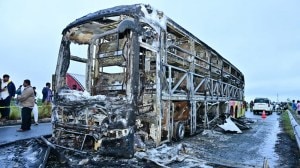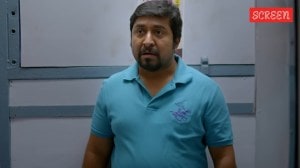Resolving without mediating
India, Pakistan and top world leaders, especially President Bill Clinton,need to take a good, fresh look at the Simla Agreement. It contai...

India, Pakistan and top world leaders, especially President Bill Clinton,need to take a good, fresh look at the Simla Agreement. It contains certa-inkey words and phrases, the crucial import of which has regrettably notreceived the pointed attention it deserves. In fact, the Indira-Bhuttoaccord encompasses what all of us and our friends abroad have been longingfor and yet have missed sp-otting: an agreed solution of the Kashmir issuewhich renders Bill’s recent offers of mediation wholly unnecessary, apartfr-om being unacceptable. At any rate, Bill has yet to win India’s trust andconfide-nce, which are a must for any successful mediation. Alas, Bill is noRoosevelt, who played a historic and heartwarming role in helping India winits freedom through unrelenting pressure on Churchill.
I say this having tested my interpretation of the Simla Accord on PrimeMinister John Major in January 1998 in New Delhi at a dinner hosted in hishonour by Prime Minister Narasimha Rao at Hyde-rabad House. Introduced toJohn by Rao as a member of the Lok Sabha and invi-ted to join a smallpre-dinner group ar-ound him, I asked: “Mr Prime Minister, English is notmy language. May I, therefore, seek a clarification from you?” He smiledand I asked: “Is there a distinction between `settlement’ and `finalsettleme-nt?" Visibly perplexed, he queried: “What have you in mind?" Ireplied: “The Si-mla Agreement. It talks of a `final settlement’ of Jammuand Kashmir and not just `settlement’, which would have been more thanenough. Hence my query.” John asked: “What distinction do you see?” Iexplained: “The words `final settlement’ imply some prior settlement wh-ichrequires to be finalised.” John smiled and said: “I think you have apoint. But then what, according to you, was the understanding?”
I explained: “The understanding is implicit in the Simla Agreement. Itaccorded the Line of Control resulting from the cease-fire the status andsanctity of an international border. This line was not to be violated underany circumstances whatsoever “irrespective of mutual differences andlegal interpretations.” Only one thing remained. Finally settling theformal border by rationalising the LoC on the basis of geographic,linguistic and other relevant factors. Bhutto, I added, had pleaded for timeto persuade his people to accept the settlement. Indira Gandhi hadgenerously acceded to the request as the victor. “In fact, she did notthereafter stake afresh India’s claim to Pak Occupied Kashmir. That was partof the understanding and supports my contention. Mr Prime Minister, we arenot fools to have stopped demanding the return of POK without any reason,when we know that mo-rally and legally it belongs to India.”
John smiled once again and rema-rked: “Most interesting.” I then told himabout my identical talk with his Foreign Secretary, Douglas Hurd, somemonths earlier at a dinner hosted by the British High Commissioner, and howhe, too, had found my interpretation “most interesting”. In fact, he hadadded: “Why has no one made these points before?” The visiting PrimeMinister thereupon remarked: “I shall have a word with Doug on return.” Iadded: "Please take a good look at the Simla Agreement especially itsconcluding para. Kindly do spot the key words `final settlement’…” As wemoved towards the banqueting hall, Narasimha Rao turned to me and said: “Iam glad you have made your point”.
Seven years later, we need to draw the specific attention of Bill and theG-8 leaders not only to the two key words `final settlement’ in theconcluding para of the Simla Agreement but to the whole para itself, whichconveys its own message. The para states: “Both Governments agree thattheir respective heads will meet again at a mutually convenient time in thefuture and, that, in the meanwhile the representatives of the two sides willmeet to discuss further the modalities and arran-gements for theestablishment of durable peace and normalisation of relations, including thequestions of repatriation of prisoners of war and civil internees, a finalsettlement of Jammu and Kashmir and the resumption of diplomaticrelations.” Establishment of durable peace between the two countries wasgiven top priority and agreement reached on the steps to be taken to“initiate the process…”
Indira Gandhi wanted the Kashmir issue resolved once and for all after the1971 war. “Enough was enough”, as she told me later. Bhutto, for his part,went along, agreeing that war was, indeed, no solution. He also agreed inprinciple to “settling” the dispute along the line of control. But hepleaded for a little time “a few months” to sell the pragmaticsolution to his people. “We can then take steps to finally settle Jammu andKashmir and ensure durable peace.” As a victor, Indira Gandhi graciouslyrelented and agreed to give Bhutto time. Little did she then know thatBhutto would betray her trust… Nevertheless, one basic fact stands out. Abroad understanding was reached in regard to a solution of the issue and thetwo leaders agreed to meet again to finalise the settlement.
Both also provided for the representatives of the two sides to meetmeanwhile to discuss further the modalities and arrangements for the“establishment of durable peace and normalisation of relations.” Mark you,the precise order in which this was to be achieved was significantly speltout. Establishment of durable peace and normalisation of relations was to beachieved as follows. First, repatriation of the prisoners of war andcivilian internees. Second, a “final settlement” of J&K. Third, resumptionof diplomatic relations. A “final settlement” of J&K was to follow therepatriation of 93,000 Pak POWs but precede resumption of diplomaticrelations. Much time was not required for it in view of the“understanding” already reached at Simla.
President Clinton needs to underst-and that he can help resolve the Kashmirissue without mediating by simply realising that there is no solution of theIndo-Pak imbroglio other than the one pragmatically reached at Simla. InJuly last year, he got Nawaz Sharif to join him in declaring that “thesanctity of the Line of Control” must be respected. He should now candidlytell Gen Musharraf during his stop-over in Pakistan that the only solutionof Kashmir lies in rationalising the LoC and acknowledging it as theinternational border, as provided for in the Simla Agreement. (Importantly,not many kn-ow that the people of POK do not speak Kashmiri).
Simultaneously, steps should be taken to improve mutual relations to a pointthat the border between our two countries becomes soft as between Ca-nadaand the US. Any other course wo-uld only result in India and Pakistancontinuing their nuclear cold war and in- sanely bleeding each otherwhite.
The writer is a former member of the Lok Sabha and Editor, India News &Feature Alliance





- 01
- 02
- 03
- 04
- 05


























